列举史上最恶劣的13种游戏设计表现
作者:Tom Senior
有些游戏机制是存在分歧的。有些人坚决反对射击游戏中的命值再生系统,而有些人又认为那完全是可以接受的。本文罗列的并不是这类存在争议的机制,而是13个应该彻底抛弃的设计失误。我们经常看到它们,甚至在斥资百万美元、动用大量人员的大作品中也存在,所以我们决定把所有控诉一次性提出来。以下被归为“设计失误”的做法就是我们怨念的产物。
1、在过场动画中打败玩家
(《孤岛惊魂3》总是定时出现过场动画)
你把海盗的营地变成碎石堆,你带着枪扫射敌人,虽然越来越多敌人从阴影处跑出来,但你所向披靡。接着,你来到一个拐角,啊!你突然不能操作了,当你反应过来,你的角色已经被一个枪托打晕了。
音乐响起,过场动画出现了。这段过场动画不只是把玩家拉回现实,还宣告他们之前在这个关卡中所做的努力都白费了。更糟的是,这段令人扫兴的过场动画通常是为了向玩家拉扯一大段叙事。有多少次我们不得不看着我们的角色醒来,透过模糊的视线,看到敌人在他面前滔滔不绝?
2、不可跳过的动画
(这种场面虽然壮观,但我现在只想射击。)
过场动画可能不错,但我们玩游戏不是为了看电影。我们已经有电影了;那些电影还是由一辈子都在研究电影的人做出来的,而且是花了几百万美元做出来的。如果我想看电影,我自然会把钱花在那些电影上,而不是在那些主要技能在于制作交互体验的人的作品上。无论如何,过场动画可以有,但必须保证它们是可以跳过的,而且允许我们挑选我们可能漏掉的情节细节。是的,这些要求也适用于简介影片。
3、保存点在不可跳过的动画前
总有些时候,我就是想关掉游戏不玩了。特别是在一大段不可跳过的动画出现前被丢回保存点。也许第一次遇到这段动画,我可以不太反感地看完,但基本上我不会想看第二次。我绝对不可能忍受第三次。
4、看不见的墙和不可跨越的、及腰高的障碍
(返回战场,或者死亡。)
在高保真的3D场景中制作可信的环形围栏,是个非常棘手的问题,但解决办法不应该是使用神奇的“看不见的墙”来阻碍进程。才膝盖那么高的小石堆太糟糕了,用飞行模拟控制你的飞船,强迫它驶进U形拐弯,同样让人觉得恶劣。
在军事射击游戏中,我们经常看到的办法是灰掉屏幕,以倒数计时死亡逼玩家返回“正道”,这至少给盲目探索增加了一点乐趣。
5、不能禁用的“你确定吗?”的弹出对话框
在玩家做某些可能破坏进度或损失经验的行为前给玩家这样的提醒,是合理的。但是,有些游戏似乎低估了玩家对自己的身体控制能力。我们的四肢没那么迟钝,我们也不至于用鼠标在屏幕上乱按。我的左半脑从来没有傻到害我误拍卖掉我的《暗黑3》装备,或者在我不想退出时关掉我的游戏。如果你问玩家他们是否肯定他们要做他们刚刚告诉你他们想做的事,那么请务必在对话框上加一个“不再提醒”的勾选框。
6、立即失败状态
(Simon说:按E射死这个坏蛋。)
在射击游戏《Rage》中,一个坐在马车里的人要求你开小车跟在他后面走。马车实在是很挡视线,但如果你开到马车前面自己走,他就会威胁你,然后开枪把你打死。这样你就得再次加载游戏,你又回到车里了。为什么要这样?为什么提供了错误的选项误导玩家后又惩罚他?按照《Rage》的做法, 玩家更可能觉得不痛快,因为这就相当于向玩家表达这样的信息:“不要想什么自由意志了。让你做什么就做什么,或者就去死。”
许多QTE都犯了这种错误。在《战地3》的最后合作战斗中,你要射杀敌人才会出现胜利动画。但是,游戏不是让你用鼠标瞄准,然后按下左键射击敌人(你在整个战斗中总是这么操作的),这一回它要求你按下E键—-进入/退出交通工具的键。我习惯性地左击,于是我失败了。请不要再用这种事折腾我了。
7、不可破坏的门
(又是《Rage》。你不能通过左边的门。你永远不能通过右边的门。)
你对这种情况一定很熟悉:你走到门前,按下使用,你听到嘎嘎的声音。大概是门把松了,尽管你看到的把门明明很牢靠的样子。没办法,也许你应该用枪把这块木板做成的门打开。你开枪了,木屑四起,但门丝毫不动。你又开了一个手榴弹,把它放在门下,你自己躲到墙角。一声巨响。你穿过浓烟回来,门还是那扇门。它总是并且永远是那扇门,因为它就是一扇“无敌”的门,它的存在只是为了浪费你的时间。
建筑当然应该有门。但设计师们在这方面的工作太可笑了。看看《半条命2》那些堆起来的家具,那些庞大的联合锁具。无论视觉语言有多么不自然,任何阻止我们把时间浪费在通过明显功能性的门的设计好的。看在上帝的份上,不要再出现“无敌门”了。
8、把“开始新游戏”选项放在“继续”选项前面
这是一个小问题,也容易改正。许多玩游戏的人也是很忙的。他们可能刚花了5分钟时间看开发者/发行商/硬件制造商/中间件的LOGO动画,连游戏的菜单都还没看到。如果玩家已经按下一次“开始游戏”,他们还能再按那个按钮几次?所以,请把光标自动放在“继续”按钮上,好让玩家能快一点进入游戏。
9、无敌的故事角色
也许在构建关卡时,设计师应该坚持考虑到玩家行为。我指的是“狂乱的精神病”模式。当你打算告诉玩家故事时,他们却上窜下跳,四处搜索,试图跳过所有障碍。现在给他们一样武器,然后向他们介绍故事的主角。接着会发生什么事呢?你以为是“坐下来喝口茶吃个包先”吗?那你就错了。他们会像杀人狂一样解决掉主角的。
开发者找了几种办法来对付疯子玩家行为。《生化奇兵》把重要的角色锁在门和笼子后面,这只是增加了一种隔离的感觉。而《黑暗之魂》和《杀出重围》采用的解决办法是,允许玩家与任何人打斗。这比《上古卷轴》的方法要高明得多,后者居然让重要的角色变无敌!记得《湮灭》中的Martin吗?上图是他被Tom打的截图。无论你怎么虐他,甚至把他丢下悬崖,不多久后他会也安然无恙地爬回来重新介绍他自己。这似乎比立即失败状态更公平一些,但破坏了游戏世界的逻辑一致性(如果这些角色这么强悍,还需要玩家保护他们的安全吗?)。
10、NPC走路速度跟玩家不一样
(这位神枪手的行走速度让人不敢恭维。)
在游戏中,当玩家被要求在某个场景中慢慢地走上一段时间时,经常是被迫跟在移动得比自己稍慢的人后面。如果他跑,就会一直撞上带领他的人的后背。如果他走,就会越来越跟不上。他可以跑到前面或后退,但仍然不太对劲。这种现象在游戏中一直发生。为什么Captain Price不能以合理的速度跑到拐角的门边?这不科学啊。为什么你在《暗黑3》救出来的老太婆不能比怪物更快跑到仅仅5步之外的出口?谁知道呢,但就是让人恼火啊。
11、命值超长的BOSS
这类BOSS的命值条非常长,至少你第一眼看到那么长的命值会感到害怕,但你很快就会发现那货就是个傻冒。它的攻击招势相当简单随便,而且时不时地暴露自己的弱点。你可以通过一次又一次地攻击它的弱点来消耗它的命值,但是会非常非常慢。这种BOSS可恶的地方不是在于要把它的命值打到0才能获胜,而是它让你开始相信这货永远永远不会死,你会从心底产生深深的绝望感。还好这种老式BOSS战已经不多见了,不然不知道还会有多少好游戏被它拖累。
12、第三人称游戏中的镜头摇摆/不准确的跳跃角度
在第三人称游戏如《刺客信条》中,跳跃角度的确定与摄像机位置有关。这是让人恼火的地方。跳柱子是一种经典的挑战。你的角色必须绕着柱子找到能与另一个柱子对齐的角度。你调整镜头、瞄准方向、按下跳跃键,然后看着你的角色以华丽丽的姿势腾空而起……落入裂缝里。没跳好。
13、执行退出游戏的命令不能退出游戏
如果按下“退出”,那么就必须退出游戏。这是非常明确的命令,并不带有“先离开一下,等会儿再从主菜单回到游戏”这种意思,所以没有必要考虑“玩家说想退出游戏,我是不是要再问下他/她是否确定退出游戏。”所谓“退出”,就是命令游戏现在就结束,玩家不想再玩了。在关闭游戏时,你可能还是希望玩家再玩下去,但命令就是命令。
就先列举这些吧,但令人恼火的设计失误还有很多,希望我能再找一些出来。不知读者们最讨厌的是哪一条呢?(本文为游戏邦/gamerboom.com编译,拒绝任何不保留版权的转载,如需转载请联系:游戏邦)
The 13 worst game design crimes
by Tom Senior
Some game mechanics are divisive. There are those who would argue vehemently against regenerating health in shooters, while others would be entirely fine with it. It’s a matter for debate. This is not a list about those mechanics. This is a list of design quirks that should be consigned to the scrapheap forever. We see them time and time again, even in multi-million dollar games built by hundreds of developers, so we decided to get some of our biggest gripes together in one place. And on that day, in a storm of fire, fury and intense grumbling, we forged our list of gaming’s greatest design crimes. Here it be.
Defeating the player in a cutscene
Far Cry 3 dishes out cutscene concussions regularly.
You’ve reduced a pirate camp to rubble. A firestorm of hot lead and popping grenades you’ve taken out twenty or thirty foes and now you’re charging into the caves with a shotgun and a tiger-bag full of ammo. Hordes more rush out of the shadows, but you cut them down effortlessly. Then you turn a corner and WHAM. Cinematic banding clamps the screen in place, the controls stop working and a goon bludgeons your character into unconsciousness with a rifle butt.
With a squeaky POP, the carefully crafted power fantasy implodes. The cutscene takedown doesn’t just jolt the player out of the action, it undermines all of their efforts leading up to the interruption, and can make entire levels feel like a pointless waste of time. Worse still, the offending cutscene defeat is often an attempt to ram a chunk of narrative down the victim’s throat. How many times must we watch our avatar wake up, restrained and bleary-eyed, to receive a monologue from some lurid villain?
Unskippable cutscenes
This is all very pretty, Rage, but I’d quite like to shoot things now.
Cutscenes can be great, but we don’t play games to watch films. We already have films, and they’re often made by people who have spent their entire lives learning how to make films. The films they make cost millions of dollars to put together. If I wanted to see a film, I’m going to spend my time on their efforts, not those whose primary skill lies in creating fantastic interactive experiences. By all means, have a cutscene or two, but make them instantly skippable and give us a way to pick up any plot details we may have lost in the interim. Yes, that goes for intro movies, too.
Save points before unskippable cutscenes
There are certain points at which I’m likely to just switch off a game and never, ever play it again. Being thrown back to a save point before an unskippable cutscene is a big one. You’re lucky if my attention survived the first watch, but the video I barely got past once will be much, much worse the second time round. I’ll never know what it’s like to endure a third run through. I’ll have long since been distracted by a squirrel.
Invisible walls and unconquerable waist-high barriers
Return to the combat area. OR DIE.
Creating believable ring-fences in a high fidelity 3D environment is a tricky problem, but the solution should never be a magic invisible barrier that blocks all progress. A shin-high trickle of rubble is almost as bad, and the flight-sim tendency to take control of your craft and force it into a U-turn feels equally awkward.
An approach we’ve seen recently in military shooters grays out the screen and threatens the player with death unless they get back in bounds before an arbitrary countdown expires, which at least adds an interesting element of blind panic to boundary navigation. Why not employ a spring loaded boxing glove USB peripheral to increase the tension? Alternatively, put a wall there.
“Are you sure?” pop-ups that can’t be disabled
Giving the player a warning before they do something that might lose progress or otherwise damage their own experience is reasonable, but some games seem to underestimate the level of physical control the player has over their own body. Our limbs are not flailing madly out of control. Mouse hands do not go rogue and start clicking random patches of screen. The left hemisphere of my brain has never betrayed me by trying to auction off my Diablo 3 inventory, or closed a game I didn’t want closed. If you’re asking a player if they’re sure they want to do what they just told you they want to do, always give them the option to tell you to shut up forever and never bother them again.
The arbitrary insta-fail
Simon says: press E to shoot the bad guy!
At the beginning of id’s post-apocalyptic shooter, Rage, you’re told to get in a car by a stranger in a buggy. Behind him a dusty slope heads off into the wasteland. If you walk past the buggy and head off on your own, he threatens you, and then shoots you dead. You’re forced to reload and get in the car. Why have the path there? Why offer a false option and then dish out the ultimate punishment when the player indulges? It sends a clear and unpleasant message. “Don’t exercise free will. Do as you’re told, or you’re dead.”
Many quick time events are guilty of committing this particular crime. In the final moments of Battlefield 3′s co-op campaign, you’re required to shoot a foe to trigger your victory cut scene. Instead of letting you aim with the mouse and left click to shoot him, as you’ve been doing for the entirety of the campaign, it randomises a button-press demand, which in my case was E – the enter/exit vehicle button (here’s a video of the scene via IGN). I pressed left-click to shoot, and failed. Less of this sort of thing, please.
Invincible locked doors
Rage again. You can get through the door on the left. You can never get through the door on the right.
You know the ones. You’ve walk up to them and press ‘use,’ you hear a weak rattling noise. Perhaps the handle wobbles apologetically, as though your avatar has given the handle an experimental tug. No dice. Perhaps you draw your shotgun and empty the barrel into the wood. It splinters but doesn’t budge. You unhook a grenade, place it at the foot of the door and run down the corridor. BOOM. You wade back through the smoke and the door is still there. It always was and always will be, for it is an Invincible Locked Door, and it exists only to waste your time.
If you’ve got a building, you have to have doors, of course. It’s fun to watch designers work their way around this one. Think of all those convenient stacks of furniture in Half-Life 2, and those big, dark cybernetic Combine locks. It doesn’t matter how contrived the visual language is, anything that stops us from wasting our time trying to go through apparently functional doors is good. And for goodness’ sake don’t put a green light on an impassable door.
Having the first option in a menu be “Start New Game” rather than “Continue”
A minor gripe, but an easy fix. Many people who play games are quite busy. Chances are they’ve spent five minutes watching a parade of developer/publisher/hardware manufacturer/middleware intro logos before even encountering the start menu. If that player has pressed “Start Game” once, how many times are they likely to ever press that again? Shift it down, have the cursor rest automatically on continue and let players get into the game that little bit faster.
Invincible story characters
Martin from Oblivion. Iron fists just bounce off his stupid face.
Maybe designers should keep a hypothetical player in mind when building levels. I propose the “frenzied psychotic maniac in a hurry” model. They’re a nightmare. You’re trying to tell them a story, but they’re jumping on the tables and kicking crockery everywhere. Release them into your world and they’ll embrace every exploit, try to vault over every barrier and worry at every loose thread of code. Now give them a weapon, and then introduce them to the main character at the center of your story. What will happen next? Everyone who said “tea, biscuits and a sing-song,” sit down. Better luck next time. Today’s prize goes to everyone who said “giggling murderous rampage”
Developers have found a few ways to cope with psychotic player behaviour. Bioshock locks important characters behind doors and cages, which only adds to those feeling of isolation. Admirably, Dark Souls and Deux Ex let you start a fight with anyone. These are both much better solutions than the dubious Elder Scrolls workaround, which makes important people invincible. Remember Martin from Oblivion? That’s him being punched in the face by Tom above. Freeze him, electrocute him. Throw him off a cliff. He’ll regain consciousness moments later, march up the mountain and reintroduce himself. This may seem fairer than an instant fail-state, but it breaks the logical consistency of the world to such a degree that it’s impossible to feel any concern for the safety of those characters ever again.
NPCs you must follow who walk at a different speed to you
Captain Price is a crack shot that moves like treacle.
If I was to construct a new circle of hell designed to send victims slowly potty over a period of hours, I would force my victims to follow someone who always moves at a pace slightly slower than their own. If you run, you bump into their back over and over again. If you walk, you slowly fall behind. You can race ahead and backpedal, but it’s still not quite right. This happens in games all the time. There’s no reason why Captain Price can’t run to that door around the corner at a reasonable pace. Why can’t the old woman you free from the Spider Queen’s web in Diablo 3 mount those five steps to the exit faster than a wad of creeping algae? Who knows, but it sure is annoying.
Bullet sponge
Look out, Jensen. Sponge at nine o’clock.
The bullet sponge boss has a health bar that’s five feet long. It’s probably huge and visually impressive, for the first minute or so at least, but you quickly learn that it’s an idiot. Its behaviour involves picking randomly from a small selection of attacks. It probably has glowing weak points somewhere. You engage the bullet sponge boss by shooting/slashing those weak points over and over again, wearing down its vast reservoir of health points in tiny increments. The bullet sponge boss does not win by reducing your health to zero, it feeds upon the ache of despair that takes root when you start to believe that this thing will never, ever die. This old fashioned model for boss encounters doesn’t just doesn’t wash anymore. Otherwise great games have been marred by this crime.
Wonky cameras/ambiguous jump angles in third-person platformers
“NYAAAAAAAARGH.”
Jump angles are defined relative to the camera position in third person platformers like Assassin’s Creed, which can lead to infuriating hiccups. Pillar hopping challenges are a classic test. Your character bearhugs some cylindrical chunk of masonry, and must awkwardly shuffle around its circumference to get aligned with another pillar. You line the camera up, you indicate a direction, press jump and watch as your little dude backflips spectacularly into a yawning chasm. Not good.
Exit Game commands that don’t exit the game
If in doubt, there’s always Alt-F4.
If someone presses “exit,” they have a right to expect an exit. It’s an unambiguous command. It doesn’t mean “hey let’s leave the session and then restart the game on the main menu screen.” It doesn’t mean “the player has indicated they want to exit the game, let’s ask them if they’re sure they want to exit the game.” It means they want you to go away now. Their time with you is done. You may weep in the background as you close down swiftly to reveal a clear desktop, but keep it silent.
That’s all for now, but there are many more mistakes out there, waiting to be named and shamed. What are your biggest pet design peeves?(source:pcgamer)



























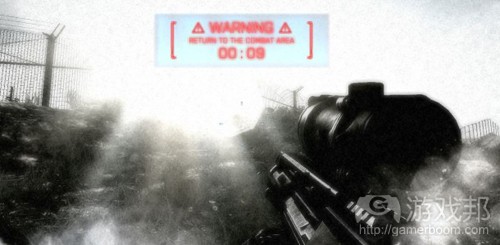

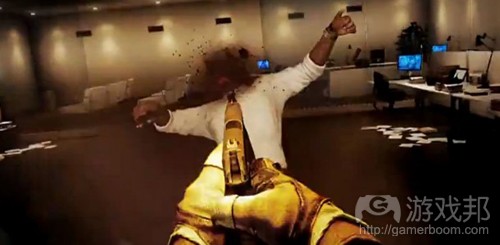
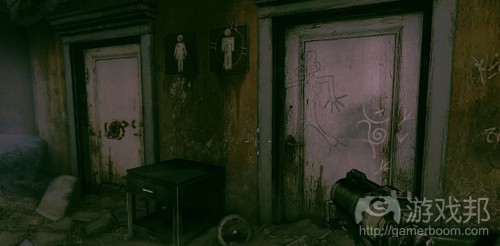
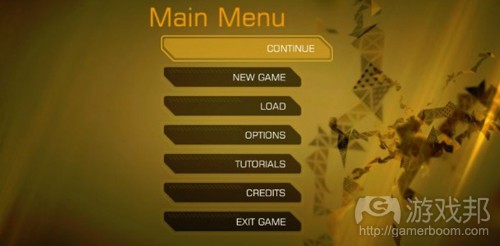
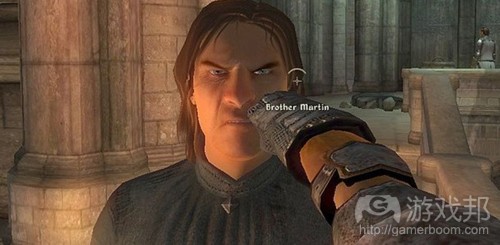

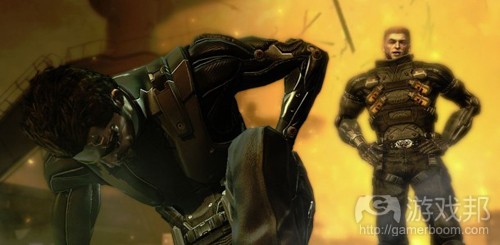

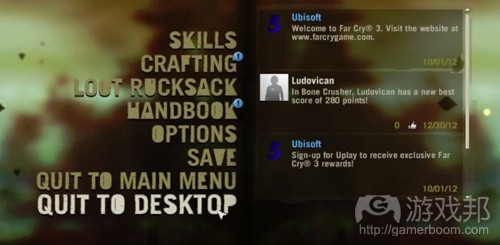














 闽公网安备35020302001549号
闽公网安备35020302001549号